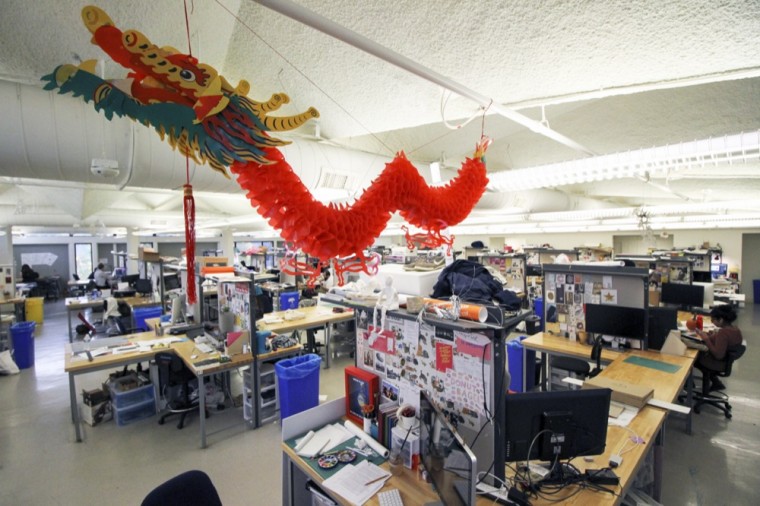Cadenza
Sam Fox students recount the economic struggles of art-making
The Sam Fox School of Design & Visual Arts aims to prepare students to go into a variety of artistic, design and architectural practices. These are all difficult fields in which to make a living. The average median income for visual and performing arts majors is $42,000 a year. But the economic costs start long before a Sam Fox student graduates.

Sam Fox students train to practice in a field where low salaries are an ongoing stressor. Even in school, the high cost of materials, technology and printing have caused many Sam Fox students financial trouble.
“Sam Fox is extremely difficult for lower income students. My freshman year, the three core studios cost over $1,000. That was more money than I paid in tuition, room and board, etc. About half of that money was spent printing. For one three-minute presentation, I had to print over $50 of drawings and pictures to meet the review requirements.”
This was an excerpt from one of the anonymous responses Student Life received in our socioeconomic survey. The respondent went on to describe a variety of other fees, from software subscriptions to project materials. Need-based financial aid doesn’t cover these expenses, even though they are an integral part of art-making in the Sam Fox school.
Senior Ali Dulman, a communication design major in the Sam Fox School, said one of the main problems lies in the continuous costs of majoring in art, design or architecture.
“The first day in [Drawing I] our professor had a kit premade for us in the bookstore, and you had to go in and say who your professor was, and it was just like $250,” Dulman said. “On top of that, almost every week I felt like we had to go to the bookstore and get more charcoal, more paper. Even if it was small costs at the time…they just add up over time.”
Other costs include printing, materials, software subscriptions and hardware. A sophomore in the College of Art is required to purchase a $2,299 MacBook Pro, and a junior in the communication design major is required to buy a $949 monitor for their desk space.
One of the most frequent expenses for students in the communication design major is printing. Each studio class has a set lab fee which is used for a student’s printing account, which is anywhere from $25 for a freshman studio to $80 for an upper-level studio. But even the initial lab fees often don’t cover the full cost of printing.
“I know last fall, they gave us $300, and I think I ended up spending like 200 more dollars of my own money, just because of the projects that I chose to do,” Sara Meinecke, a senior in the Sam Fox School, said.
Dulman echoed Meinecke’s story, saying that printing costs often created an added stressor in her work. Last year during finals week, when final projects were being printed and reprinted in order to get every aspect right, Dulman found herself constantly adding extra money to her printing account.
These costs are hardly avoidable. In the print-heavy design field, most professors require full printouts of projects, even during the drafting stages.
Things aren’t much more cost-effective in the fine arts. Meinecke, who has taken studio art classes in printmaking and painting, said that materials costs are often not covered by the school.
“They don’t provide anything for you except for maybe some basics,” Meinecke said. “So if you want to work with metal, if you want to work with wood or oil paints, those are all really costly.”
When students do begin looking for work, whether it be an internship or full-time position, they face another set of challenges. Dulman said that internships in the design field don’t open up until the spring, meaning students are left waiting to find out if there are positions available for them in the summer. Several of her colleagues looking for internships in New York City were forced to put down deposits on housing, not knowing whether or not they would get an internship.
Senior communication design major Sarah Mitrano noted the disparity in job opportunities in the Sam Fox School and other schools, like the Olin Business School.
“I have lots of friends who are in the business school and they already know that they have jobs…and know that they are going to be making $70,000 right out of school,” Mitrano said. “I don’t know if I’ll ever make that much money.”
Both Mitrano and Dulman admitted that these challenges were simply inherent in their field, part of a “life is unfair; deal with it” mentality.
Dulman said she sometimes has regrets about choosing such a costly field, but maintained that design is where her talent lies and where she is determined to make a living.
“I have regrets a lot, because I could have done anything else,” Dulman said. “But I also love [communication design]. I love the community that it gives me at Wash. U.”
Whether or not the work will pay off is unclear. For lower income students like the anonymous respondent in Student Life’s survey, the burden is still high.
